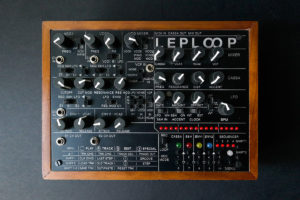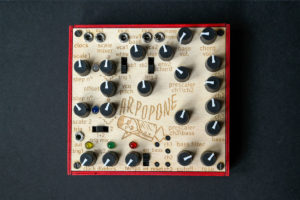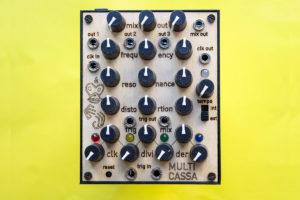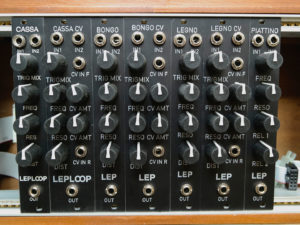
LepLoop
A minimalist electronic music live-performance groove-box, Small in nature but aggressive in sound.

Arpopone
A melody/bass line generator with a chord and rhythmic section, available in desktop and euro rack format

Multicassa
The multicassa is an electronic instrument composed of 3 cassa generators controlled by an analog trautonium like rhythms generator.

LepLoop Percussion Modules
Line of percussion modules are an electronic euro rack modules for create percussion sound and special efx